| Anmol Chemicals is the pioneer manufacturers of Cellulose Acetate, Pharmaceutical Excipients Food & Flavor chemicals in India. We supply Halal and Kosher Cellulose Acetate made in an ISO9001, ISO22000 (FSSC22000) and cGMP certified facility. Our group has several manufacturing facilities spread across the world, supported by toll manufacturers and representatives in UAE, Europe, Africa, USA, China and has several associated manufacturing facilities spread across India. All the Information on Physics, Chemistry, Applications, Uses and Technology on Manufacture of Cellulose Acetate is in these pages. |
| The units have one or more of the certifications like FDA GMP, ISO 9001, ISO 22000, HACCP, REACH, Kosher & Halal |
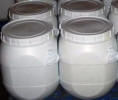
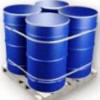

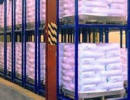
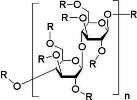
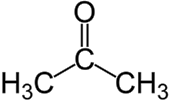
Cellulose Acetate BP EP Ph EUR USP NF Grade Manufacturers
Cellulose Acetate: CAS Number: 9004-35-7, EINECS EC Number: --, Molecular Formula: --, Molecular Weight: --, HS Code ---**
Cellulose Acetate SDS MSDS Sheet of Manufacturers
Cellulose Acetate BP Grade
Ph Eur
Action and use: Excipient.
DEFINITION
Partly or completely O-acetylated cellulose.
Content: 29.0 per cent to 44.8 per cent of acetyl groups (C2H3O) (dried substance) and 90.0 per cent to 110.0 per cent of the acetyl content stated on the label (dried substance).
CHARACTERS
Appearance: White, yellowish-white or greyish-white powder or granules, hygroscopic.
Solubility: Practically insoluble in water, soluble in acetone, in formic acid and in a mixture of equal volumes of methanol and methylene chloride, practically insoluble in alcohol.
IDENTIFICATION
Infrared absorption spectrophotometry.
TESTS
Free acid: Maximum 0.1 per cent, calculated as acetic acid (dried substance).
To 5.00 g in a 250 ml conical flask, add 150 ml of carbon dioxide-free water, insert the stopper, swirl the suspension gently and allow to stand for 3 h. Filter, wash the flask and the filter with carbon dioxide-free water. Combine the filtrate and washings. Add 0.1 ml of phenolphthalein solution. Titrate with 0.01 M sodium hydroxide until a faint pink colour is obtained.
1 ml of 0.01 M sodium hydroxide is equivalent to 0.6005 mg of free acid, calculated as acetic acid.
Heavy metals: Maximum 10 ppm.
2.0 g complies with limit test D. Prepare the standard using 2 ml of lead standard solution (10 ppm Pb) R.
Loss on drying: Maximum 5.0 per cent, determined on 1.000 g by drying in an oven at 105C for 3 h.
Sulphated ash: Maximum 0.1 per cent, determined on 1.0 g.
Microbial contamination: Total viable aerobic count not more than 1000 micro-organisms per gram of which not more than 100 fungi per gram determined by plate count. It complies with the tests for Escherichia coli and Salmonella.
STORAGE
In an airtight container.
The label states the nominal percentage content of acetyl groups.
Cellulose Acetate USP NF Grade
Cellulose, diacetate [9035-69-2].
Cellulose, triacetate [9012-09-3].
Cellulose Acetate is partially or completely acetylated cellulose. It contains not less than 29.0 percent and not more than 44.8 percent, by weight, of acetyl (C2H3O) groups, calculated on the dried basis. Its acetyl content is not less than 90.0 percent and not more than 110.0 percent of that indicated on the label.
Packaging and storage: Preserve in tight containers.
Labeling: The labeling states the nominal percentage content of acetyl.
Identification: Prepare a solution of Cellulose Acetate (1 in 10), previously dried, in dioxane. Spread 1 drop of the solution on a sodium chloride plate, place a second sodium chloride plate over it, and spread the specimen between the plates. Separate the plates, heat them both at 105C for 1 hour, and reassemble the dried plates: the IR absorption spectrum exhibits maxima only at the same wavelengths as that of a similar preparation of USP Cellulose Acetate RS, treated in the same manner.
Loss on drying: Dry it at 105C for 3 hours: it loses not more than 5.0% of its weight.
Residue on ignition: not more than 0.1%.
Heavy metals: 0.001%.
Free acid: Transfer about 5 g, accurately weighed, to a 250-mL flask. Add 150 mL of freshly boiled, cooled water, insert the stopper into the flask, swirl the suspension gently, and allow it to stand for 3 hours. Filter through paper, and wash the flask and the filter with water, adding these washings to the filtrate. Add phenolphthalein, and titrate the combined filtrate and washings with 0.01 N sodium hydroxide. Calculate the percentage of free acid in the portion of Cellulose Acetate taken by the formula: 0.06005A/W in which A is the volume, in mL, of 0.01 N sodium hydroxide consumed; and W is the weight, in g, of the Cellulose Acetate taken, calculated on the dried basis. Not more than 0.1%, calculated as acetic acid, is found.
Content of acetyl:
FOR CELLULOSE ACETATE LABELED TO CONTAIN NOT MORE THAN 42.0% OF ACETYL GROUPS:
Transfer about 2 g, accurately weighed, to a 500-mL flask. Add 100 mL of acetone and 5 mL to 10 mL of water to the flask, insert the stopper into the flask, and stir with a magnetic stirrer until solution is complete. Add 30 mL, accurately measured, of 1.0 N sodium hydroxide to the solution, with constant stirring. A finely divided precipitate of regenerated cellulose, free from lumps, is obtained. Insert the stopper into the flask, and stir with a magnetic stirrer for 30 minutes. Add 100 mL of water that has been preheated to 80C, washing down the sides of the flask, stir for 2 minutes, and cool to room temperature. Titrate the excess sodium hydroxide solution with 1.0 N sulfuric acid to a phenolphthalein endpoint. Treat a blank in the same manner. Calculate the percentage of acetyl in the portion of Cellulose Acetate taken by the formula: 4.305(B – A)/W in which B and A are the volumes, in mL, of 1.0 N sulfuric acid consumed by the blank and the Cellulose Acetate, respectively; and W is the weight, in g, of Cellulose Acetate taken, calculated on the dried basis.
FOR CELLULOSE ACETATE LABELED TO CONTAIN MORE THAN 42.0% OF ACETYL GROUPS:
Transfer about 2 g, accurately weighed, to a 500-mL conical flask. Add 30.0 mL of dimethyl sulfoxide and 100 mL of acetone, and stir for 16 hours with the aid of a magnetic stirrer. Pipet 30 mL of 1 N sodium hydroxide slowly into the flask, with constant stirring. Insert the stopper into the flask, and stir for 6 minutes. Allow to stand without stirring for 60 minutes. Resume stirring, and add 100 mL of water that has been preheated to 80C, washing down the sides of the flask. Stir for 2 minutes, and cool to room temperature. Add 4 to 5 drops of phenolphthalein, and titrate the excess sodium hydroxide solution with 0.5 N hydrochloric acid. Add an accurately measured excess of about 0.5 mL of 0.5 N hydrochloric acid. Stir for 5 minutes. Allow to stand for 30 minutes. Titrate with 0.5 N sodium hydroxide to a persistent pink endpoint, using a magnetic stirrer for agitation. Calculate the net number of milliequivalents of sodium hydroxide consumed, and correct this value by use of the average of two blank determinations run concomitantly through the entire procedure. Calculate the percentage of acetyl in the portion of Cellulose Acetate taken by the formula: 4.305n/W in which n is the corrected value of the net number of milliequivalents of sodium hydroxide consumed; and W is the weight, in g, of Cellulose Acetate taken, calculated on the dried basis.
We also offer Acetone BP USP NF ACS Reagent FCC Food Grade.
You may check our other products like: Cellulose Acetate --- Ferric Ammonium Citrate --- Heavy Kaolin --- Lithium Citrate --- Phenyl Mercuric Nitrate --- Saccharin Sodium --- Taurine
Please visit chemical supplier, manufacturer exporter.
Manufacturers
Anmol Chemicals
S-8, SARIFA MANSION, 2ND FLANK ROAD, CHINCHBUNDER, MUMBAI 400009, INDIA
TEL: (OFFICE) 91-22-23770100, 23726950, 23774610, 23723564. FAX: 91-22-23728264
e-mail: anmolc@mtnl.net.in

Exports to USA, Canada, UAE, Dubai, South Africa, Tanzania, Kenya, Nigeria, Egypt, Uganda, Turkey, Mexico, Brazil, Chile, Argentina, Europe Netherlands, Italy, Spain, Germany, Portugal, France, Malaysia, Indonesia, Thailand, Vietnam, Korea, Japan, etc.
Copyright and Usual Disclaimer is Applicable. 15 January, 2022
Barter
They who love thee on this earth, keep calling on thee and chanting thy beads
Lest thou forgetest.
They assign the credit of their hard work to your blessings
They keep you amused.
They come to thy temple with baskets of fruits, as if you were a glutton
They deny the same to their children.
They offer you milk for a bath and burn the ghee
They hardly understand the meaning of it.
They bring gold and diamonds. They come with beating of drums
They love to advertise their offerings.
They offer you a small bribe as advance for booty, called lottery
They love to dream.
I do not bow down at your door
I do not bargain for booty
Your promise of the heaven does not lure me
Your hell-fire does not scare me
I do not even know the proper method of prayer
I do not offer any thing to you
Ages have gone by and I have not seen you my lord
Yet my love for you keeps waiting for you